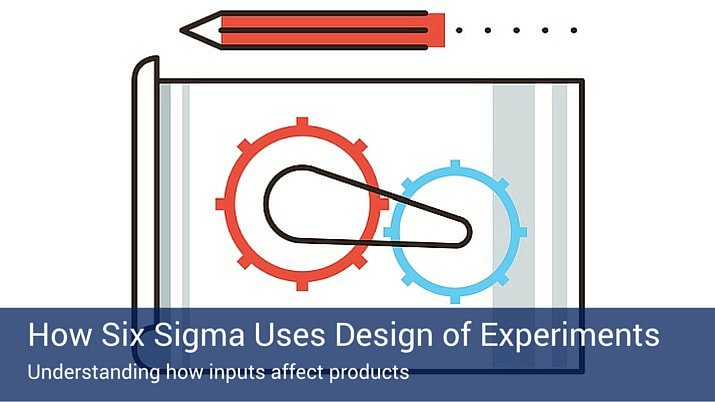How Six Sigma Uses Design of Experiments

Last Updated October 19, 2023
Six Sigma design teams can use Design of Experiments (DOE) to help them understand how various combinations of inputs affect their final output or product.
Design of Experiments separates each variable in a production process and calculates every variable’s contribution to the final product. As an example, if the DOE method were applied to baking a cake, these three components would be used.
Factors – These are the raw ingredients that go into the recipe or process. In the cake-baking example, the factors would include oven temperature, water, sugar, flour, frosting, and eggs.
Levels – These include the various amounts of ingredients used in each recipe. Levels for baking a cake can include ingredient amounts, frosting, oven temperature and baking time.
Response – This component is how the cake turns out. Design of Experiments takes into account all the combinations of factors and their differing levels, then seeks a measurable output. The response or output in this example is the cake’s appearance and flavor.
The Three Stages in a Design of Experiments
Choosing the Factors
Design project teams should first identify the raw ingredients, called factors, which go into a process. Focusing on seven key factors or less typically works best when using the DOE method. The methodology focuses on those factors having the highest influence on the output, or final product.
Setting the Levels
After identifying the factors, the mix of raw ingredients can be altered in each test run to determine the effect on the final product. This is called “setting the levels.”
Ingredients can be measured differently, which complicates modifying their amounts in a test run. In the cake-baking example, some factors, such as cooking time and oven temperature, can be measured objectively. Other factors, such as frosting amounts, are normally measured more subjectively. Converting these kinds of factors into measurable amounts is necessary for comparison.
The more combinations of ingredients – or levels – that go into a process, the more runs will be needed to test each of the levels. Focusing on a range of interest can reduce the number of runs needed and save time for the project team. The range of interest includes the most likely combinations of levels (or ingredients) to occur in the typical sequence of production.
Response Assessment
The result of the experiment is called the response. This step gauges the success of your process, or in the example of baking a cake, it looks at how your cake turns out. A response that can be expressed in measurable terms as opposed to qualitative terms is valuable. It’s often easier to compare cakes ranked on a point scale than in subjective terms like moist and delicious.
Overall, Design of Experiments is a valuable Six Sigma tool that assists project teams in finding the optimal combination of raw ingredients to design the highest quality product or service.





